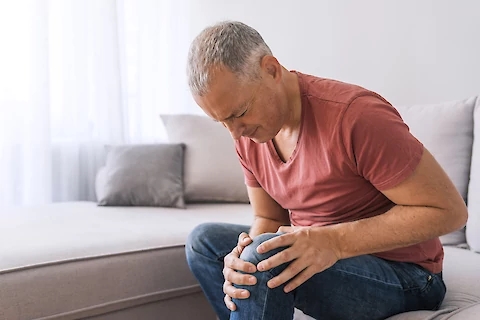
Everyday Living with Osteoarthritis
If you or a loved one has recently been diagnosed with Osteoarthritis, you're probably asking numerous questions about the disease. At Senior Helpers, we aim to inform as well as help patients along their journey. If you're experiencing symptoms and think you may have Osteoarthritis, there are certain signs you should watch out for and discuss with your physician.
Osteoarthritis doesn't have to take control of your life, and having your questions answered will give you the control you need to feel educated as well as prepared to handle the road ahead!
What is Osteoarthritis?
Osteoarthritis is a type of arthritis that, while common, can be detrimental to everyday bodily functions. A loss of cartilage to protect the joints from scraping on each other leads to pain in the joints, most commonly the knees. It also leads to morning stiffness and sometimes causes swelling around the affected joints.
Though commonly associated with the elderly, Osteoarthritis can appear as early as a person's mid-forties. This disease can be genetic, but that is not always the case.
Being overweight, or obese, can cause a greater chance of developing Osteoarthritis, as well as other lifestyle factors. Factors such as posture, how the body is taken care of, as well as serious injuries all have the potential to contribute.
Five Symptoms You Should Know
If you're around or past the age of 45 and you notice any of these signs showing up or any changes in how you're feeling, it's best to pay attention to your body and pay attention to any new changes or symptoms. Here are five symptoms that may signal Osteoarthritis.
- Morning stiffness on a daily basis
- Swollen joints
- Neck, knee, and back pain
- Numbness in the limbs
- Pain while bending or climbing stairs
Some of these symptoms could be mistaken for other conditions, so it's important to have a thorough physical check-up completed, and potentially blood work to rule out any other diseases. A rheumatologist is the type of doctor to see for anything arthritis-related.
Chronic Pain Management
The pain that accompanies Osteoarthritis is chronic, meaning it lasts longer than a few days. While this pain can seem unending, there are lifestyle changes that can keep the pain at bay. Not all pain management methods have to be pharmaceutical, either. In fact, there are plenty of at-home pain remedies and treatments. Here are eight at-home treatments to manage your Osteoarthritis pain.
- Gentle exercise (this shouldn't be excessive or harsh on the joints)
- Ice compressions on the affected joints
- Therapeutic massage
- Chiropractic adjustments
- Weight loss
- An anti-inflammatory diet
- A custom-fitted back brace
- Rest
Exercises for Pain Management
- Swimming
- Walking
- Low-intensity bicycling
- Yoga
- Pilates
For more advice on pain management, symptoms, as well as what to expect after a diagnosis, take some time to read this article.
Senior Helpers will be here for you or your loved one every step of the way! Our trained professionals know the key tools to assist in pain management, and aim to encourage a healthy as well as an active lifestyle! Contact us here! We would love to hear from you.